

Suunto Blog
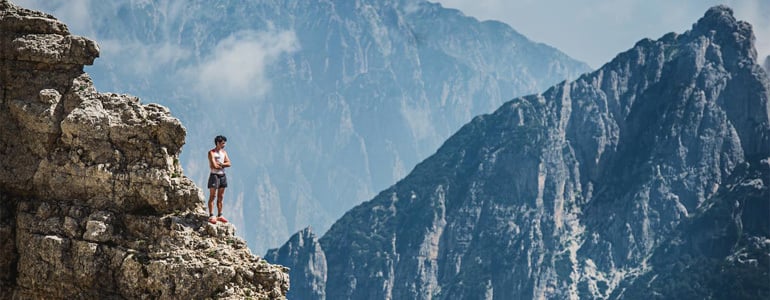
Run downhill like Kilian Jornet
Want to descend mountains with the speed and finesse of Kilian Jornet? Follow his downhill running tips here. To watch Kilian Jornet charge down a mountain is to see something that is almost beyond possible. Like a squirrel down a tree, his downhill running seems to defy the laws of gravity. How does he do it? Here, in his own words, Kilian explains:
Go to the mountain
For technique, for training, you need to spend hours in the mountain. You can go to the gym and get big quads but for the downhills, it doesn't work. You need to run downhills and downhills and downhills and then you learn the technique!
Close your eyes
It's not just about the legs and muscles, but more about the vision, about the anticipation of the trail, the obstacles. Like skiing, you need to pick your line. When you run fast you don’t see where to put your feet but you see the next four to five steps ahead and you need to know where your body and feet are on the ground. Close your eyes and run for 15 meters blind to try to remember the terrain. This is also good for balance.
Relax
The two main things in downhill are vision and the need to be relaxed. When we run downhill we tense all the muscles and this causes tiredness. If we run relaxed we can run faster and with less energy. For relaxation, practice descending like you’re dancing. For example, run down with your arms completely relaxed and every two steps do a little jump and kick your legs together.
Stretch
For running in the mountains the most important thing is to be flexible – to be able to adapt to every different situation. The perfect technique doesn’t exist for hill running! You need to be really elastic to adapt for all kinds of terrains.
Don't think about the pain
When you run for long distances it’s impossible to avoid pain — it’s for everyone. When it comes you need to think of other things — the landscape, you talk with the racers, listen to music. I think about stories, like I’m a warrior being chased by an army. To not think about pain, you need to be in another world.
Don't forget the uphill
For uphill it’s important to practise walking. A lot of people come from road running and as soon as it gets steep they don’t know how to walk. For walking it’s important to use all the body so the hands are pushing on the knees. This is a good exercise.
Kilian Jornet is a Suunto ambassador. Get to know him here.
All images ©zooom.at/Markus Berger
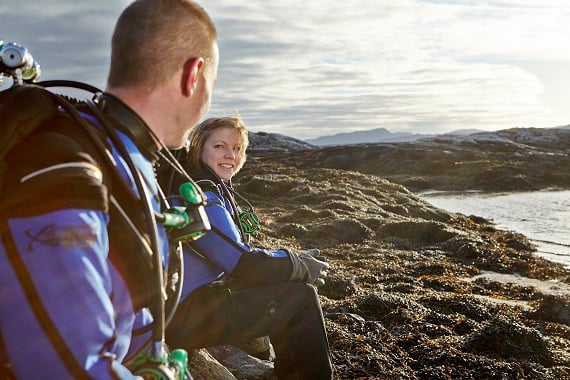
Suunto's next generation dive computer
What’s next for Suunto dive computers? That question will be answered this fall when we unveil our latest creation for divers seeking the best. This advanced, large display dive computer with a bright color screen grows with you.
Suunto has developed many diving innovations in the last 50 years together with divers - including the first dive compasses and early dive computers. Our next dive computer continues this tradition of co-creation with you - our diving family - and we thank you all for your valuable feedback.Creating reliable products designed for the harshest of elements is a part our near 80-year heritage. The next great Suunto dive computer adds another chapter to the extraordinary Suunto story.
Want to know more? Sign up here and you'll be the first to receive additional details about this exciting new product.

Selfie winner Ross Lovell on his love of adventure
Cyclist and mountain biker Ross Lovell is one of the four winners from our Instagram selfie contest. Here the 30-year-old Briton tells us about his passion for endurance sports and adventure...
Riding the cobbles in the Alps. How does it feel to win? Incredible! I’ve been using an original Ambit for a couple of years and it has revolutionalised how I train. The depth of information is invaluable for enabling me to hit my targets, so I can’t wait to explore and challenge myself with the Ambit3 Sport. Just as importantly though, it’s really nice to have my photo picked by such a dedicated athlete as Conrad Stoltz. Tell us about the shot.The photo was taken on the second day of eight-days riding through the Alps. The day before we had ridden the 211km Salzkammergut Mountain Bike Trophy (with 7,000 m of ascent!), and as a shorter recovery ride we decided to take on the Kitzbuheler Horn. Wow, it was such a ferocious climb – relentless all the way to the top. On tired legs it was quite a fight. The last few switchbacks really get the burn going, with the gradient pitching to around 23%. Fighting the gradient, and whilst also trying to hold the bike in a straight line one-handed (not easy!) I quickly snapped the shot of our struggle.
Ross after completing the 211km (7,000 m) Salzkammergut Trophy
What are your sports? Cycling, mountain biking, running, climbing, although I wouldn’t say I’m great at any of them, I just like a good challenge and an adventure.
Tell us about your adventures. I’ll have a go at anything really, so have quite a varied list of previous challenges. I’ve raced the Cape Epic and Transportugal mountain bike races, climbed in the Alps and Pyrenees, swum up rivers in Sweden, kayaked non-stop for 26-hours, run ultra marathons like The North Face 100 in the Blue Mountains and Dusk til Dawn in the UK, twice finished the Norseman Xtreme Triathlon, ridden the Tour du Mont Blanc 3-times, cycled from London to Alpe d’Huez…Anything else? My first big adventure was when I was just 18 and spent six months cycling and climbing around Europe. We were completely spontaneous – just looking at maps and deciding where to go next, sleeping on beaches and on mountains. It was total freedom. We even ran the Swiss Alpine Marathon in Davos while we were there. A couple of years ago we cycled from London, through Holland, Belgium, Luxembourg, France, Germany, Lichtenstein, Switzerland, mountain biked across the Alps to Lake Geneva and then ran the GR20 across Corsica, all in just 14-days.
Ross's winning selfie, climbing the Kitzbuheler Horn, Austria.
A recent adventure you're really proud of?On the final day of our eight-day cycling tour of the Alps, we finished with the 330km Tour du Mont Blanc, with its eight climbs and 8,000 m of ascent. The weather had one final sting in the tail. As we came over the penultimate pass – the Cormet de Roselend – we were hit by an almighty storm which caused trees to come down, lightning all around us, big hail stones, landslides. Only 50% of the riders who started the day made it to the finish, which made the accomplishment all the more special, especially after the full-on week we had already tackled.
What's next? Over the weekend of September 28th/29th I will be running 120-miles non-stop across my home county of Devon in the south west of the UK – from Coast-to-Coast. www.lighthouse2lookout.co.uk.
Follow Ross via Twitter and Instagram.
All images ©Ross Lovell
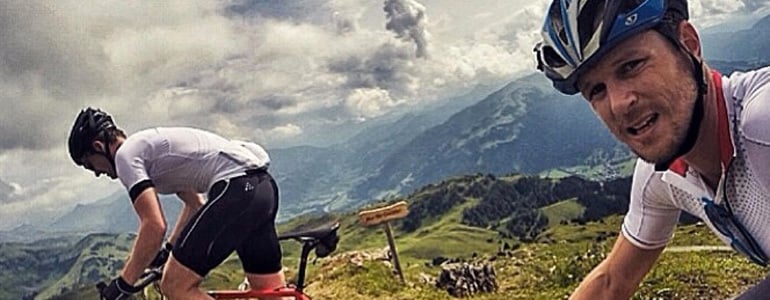
And the winners are...
Our #SuuntoAdventure selfie contest has now come to an end and we're pleased to reveal the four winners below. They will each receive the new Ambit3 Sport.
Selfies are everywhere. Whether it's on the top of a mountain or out on the trail, everyone loves to grab a selfie to share with friends. So at Suunto, we thought it would be a great idea to invite our fans and the wider community to send us their best shots.
We were overwhelmed by the response, receiving thousands of inspiring entries via Instagram. The four winning shots were each selected by one of our Suunto ambassadors – Kilian Jornet, Emelie Forsberg, Conrad Stoltz and Greg Hill.
Below, we present each ambassador's choice. Thanks to everyone who submitted images. It was a difficult choice.
In the coming weeks we'll have interviews with each of the winners to hear more about the story behind their shots.
Emelie Forsberg choice:
Winner: Patrick Müller Suarez, @patrickamsSays Emelie: “This picture captured my imagination right away with the light – is it morning or evening? – and made me think of a long day out exploring new mountains. The picture exudes exploration.”
Kilian Jornet choice:
Winner: Trent Busenbark, @trentbusenbarkSays Kilian: “The picture takes us right there and lets us feel what he feels. We can feel the cold, the storm, the tiredness. Adventure is also about bad conditions and hard times that make us happy when we come home.”
Conrad Stoltz choice:
Winner: Ross Lovell, @rosslovellSays Conrad: “I can see how crazy steep the hill is by the gear your friend is standing on! You deserve to win for riding one handed and snapping a great photo after such a massive climb!”
Greg Hill choice:
Winner: Corky Still, @akskicaSays Greg: “The vast background, untouched and waiting feels like unconquered territory. And there is excitement and unlimited potential to this skier. So many ski lines waiting for them...”
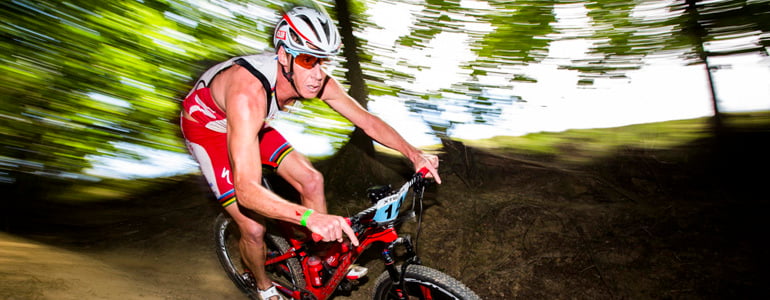
Caveman Conrad conquers England
After winning XTERRA UK, the Suunto ambassador Conrad Stoltz now has Denmark in his sights. Is there any stopping him? It's been a bit of a disappointing season for Conrad Stoltz so far. “It's been a bit of a roller coaster with unfortunate injuries, sickness and mechanicals,” he tells us. But the so-called 'caveman' put all that behind him after triumphing at the UK course. “I finally did my form justice and put together a phenomenal race. It's what I love best!” he says. “XTERRA UK is a race with real mountain biking and trail running – true XTERRA terrain, so I was super excited to race this course. This year I have been really disappointed with a lot of the courses which weren't technical. They were 'roadie courses’ – mostly fire roads which has been super frustrating.”
“XTERRA UK put up a great event with very technical bike and run courses,” he adds. The running course saw athletes having to leap across ditches and jump over trees, for example. Check out this video to see Conrad running the route.“I was out of the swim 1min behind the leader and came off the bike with a 5 minute lead and a silly grin on my face,” adds Conrad. “It was adventurous and fun. I hope other organisers take note and make sure their routes include actual mountain bike trails!”Next on the calendar is Denmark this weekend and Conrad is as focused as he's ever been. “I hope to repeat my performance here,” he says.
All images ©lighttrapper.co.uk
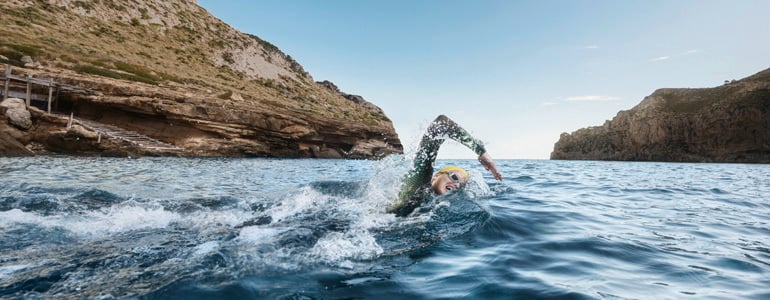
The 5 swimming drills every triathlete should practice
UPDATED ON MARCH 29, 2022.
Follow these swimming drills on your Suunto!
With the help of SuuntoPlus Guides, you can now follow these swimming drills on your Suunto watch. Before starting a swim exercise on your watch, go down to exercise options and select ’Swim drills’ from the SuuntoPlus Guides menu. Start the workout and you will see step-by-step guidance on one of your watch screens. Swipe left until you see it. Press lap (lower right button) to advance from one step to the next one.
Read on to learn the drills!
Fingertip drag
Having a high elbow is essential to extend your reach and improve efficiency in the water. There are a few variations you can practise. One of the simplest is the fingertip drag. Let the tips of your fingers brush the top of the water as you reach forward with your recovery arm. You can also make it even harder by having your whole hand in the water.
Fists
Nothing reveals the magic power of your pulling hand better than trying to swim without it! For this exercise, swim with your fists clenched. This is a great drill to appreciate the role your forearms play. And when you then repeat using your hands as usual, you'll discover a new-found understanding of hand and forearm position.
Zippers
If you're looking to improve your swim technique, sooner or later you need to work on your rotation. This is a great way to get your body used to rolling from side-to-side. It also helps to keep your recovery hand close to your body. For this drill, roll on your side and run the thumb of your recovery arm – the one that's out of the water – from your hip, all the way up your side before placing. Can be used with fingertip drag as well.
Catch-up
In order to speed up, you need to slow down. Fewer strokes also means less energy expenditure, which is crucial in triathlon. This drill works on your reach to ensure you're getting the maximum power from your strokes. Instead of going straight from recovery into pull, let your recovery arm touch your other hand, and then reach forward before beginning the opposite pull. The goal is to make every stroke as long as possible.
Kicks
Oh yes, these are among the most feared and unloved exercises for swimmers but also some of the most important. In triathlon, your legs should do the bare minimum to save their strength for cycling and running. In fact you shouldn't look to get any propulsion from your legs. But you need them for good body position and to ensure they don't drag. One of the best drills is to use a kick board. Point your toes, kick from the hips and whatever you do, don't bend your knees.
All images ©zooom.at/Markus Berger






























































